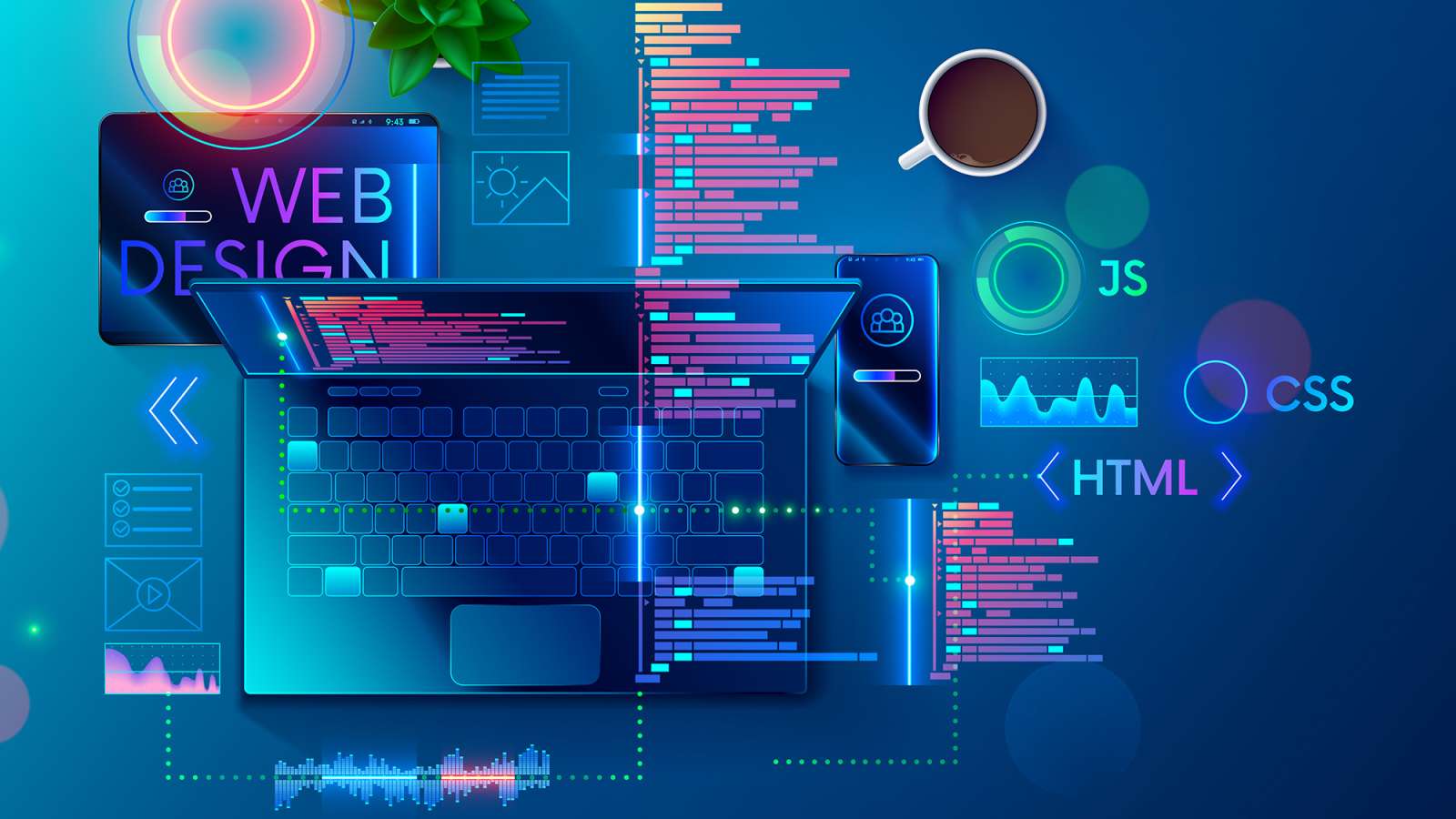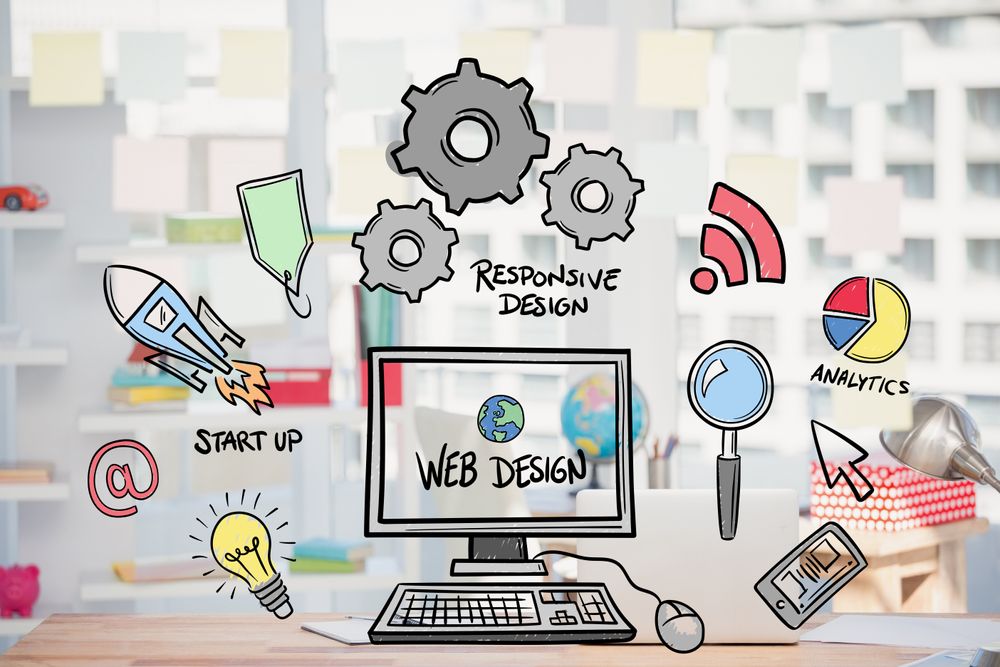How a web design company transforms user experience and boosts conversions
Checking Out Creative Trends in Web Design for Modern Services
The landscape of web design is continuously developing, mirroring the vibrant needs of modern services. Recent fads highlight a preference for minimalism, bold typography, and interesting interactivity. Firms significantly prioritize user experience through mobile-first concepts and tailored web content. Additionally, a focus on sustainability is obtaining traction. Understanding these fads is essential for services aiming to stand apart in a crowded market. What effects do these changes hold for the future of electronic interaction?
Welcoming Bold Typography
Bold typography has arised as a defining component in modern web design, catching attention and conveying messages with striking clearness. This trend prioritizes aesthetically impactful text that improves user engagement and brand name identity. Designers frequently make use of special fonts and large font styles to produce a power structure, guiding audiences with web content seamlessly.
The strategic use bold typography permits effective storytelling, allowing brand names to interact their worths succinctly. It serves not only aesthetic functions yet also practical ones, as it improves readability across devices and display sizes.
As internet sites contend for user attention, bold typography stands out in a saturated digital landscape. Its convenience enables designers to trying out contrasting colors and layouts, better amplifying its performance. Eventually, welcoming strong typography stands for a shift towards even more expressive and communicative web design, cultivating a deeper link between brand names and their target markets.
The Rise of Minimalist Style
As digital environments become significantly messy, the surge of minimal style uses a renewing choice that focuses on simpleness and performance. This design ideology remove unnecessary components, permitting content to take facility stage. By focusing on tidy lines, ample white area, and a minimal shade combination, minimal design improves user experience and boosts navigating.
Services adopting this trend goal to share their brand message plainly and efficiently, promoting a sense of tranquility and clearness. The absence of diversions aids customers focus on necessary information, leading to enhanced interaction and conversion prices. In addition, minimal layout lines up well with mobile-first approaches, making sure that websites remain accessible and straightforward throughout numerous tools.
Eventually, the increase of minimal design reflects a more comprehensive change in the direction of prioritizing user needs and choices, making it an effective tool for modern-day services wanting to make an enduring influence in the digital landscape.
Immersive Animations and Interactivity
While lots of internet designers welcome minimalist looks, an additional compelling trend getting traction is using immersive computer animations and interactivity. This approach enhances user involvement by creating interesting experiences that draw visitors into the content. Designers use dynamic elements such as computer animated histories, scrolling effects, and interactive infographics to connect intricate ideas in an available way.
These animations not only supply aesthetic rate of interest however also guide customers through the navigating procedure, making interactions extra user-friendly. For example, hover impacts and computer animated changes can urge users to discover further, resulting in boosted time invested on the site.
This fad lines up with the broader activity in the direction of storytelling in internet design, where computer animations offer as narrative devices that share brand name messages efficiently. By incorporating immersive computer animations and interactivity, organizations can distinguish themselves in a jampacked online landscape, inevitably boosting user fulfillment and brand name loyalty.
Mobile-First Design Concepts
Mobile-first design concepts stress focusing on user experience by making certain sites function effortlessly on smaller screens. This approach includes responsive design techniques that adjust to various gadget dimensions while maintaining aesthetic stability. Furthermore, it focuses on touchscreen navigation design, enhancing functionality for mobile individuals.
Prioritizing User Experience
Exactly how can developers efficiently prioritize user experience in an increasingly mobile-centric world? Stressing mobile-first style principles is necessary, as users primarily involve with websites via smart phones. This method urges designers to simplify material, guaranteeing it is navigable and quickly obtainable on smaller displays. Secret practices consist of streamlining navigating, minimizing tons times, and utilizing touch-friendly components that enhance interactivity. In addition, focusing on legible typography and intuitive designs can greatly enhance user complete satisfaction. Developers must constantly collect user responses to fine-tune their techniques, adjusting to advancing user demands and preferences. By focusing on these aspects, services can create an engaging digital experience that cultivates commitment and drives conversions, eventually straightening with the assumptions these days's mobile customers.
Receptive Format Strategies
Developers welcome responsive layout techniques to produce adaptable and flexible internet experiences that satisfy different display sizes. This technique focuses on mobile-first design principles, guaranteeing peak performance on smaller sized gadgets prior to scaling up for bigger displays. By utilizing liquid grids, versatile pictures, and media queries, developers can maintain a cohesive aesthetic identity across all systems. This technique not only boosts user involvement but also enhances internet search engine rankings, as mobile-friendly websites are favored by search algorithms. In addition, responsive layouts allow companies to reach a wider audience, fitting individuals on smart devices, tablets, and desktops alike. On the whole, carrying out these techniques is crucial for contemporary web design, ensuring that companies remain affordable in an ever-evolving electronic landscape.
Touchscreen Navigation Style
With the increase of smart phones, touchscreen navigation has ended up being an essential element of web design. Designers are increasingly adopting mobile-first principles to enhance user experience and involvement. Website Design Agency. Effective touchscreen navigating prioritizes bigger switches and intuitive motions, enabling users to engage quickly with content. This method minimizes aggravation and motivates expedition, as customers can navigate seamlessly with their fingers. Additionally, incorporating swipe motions and faucet capability accommodates the all-natural behaviors of mobile users. Comments devices, such as aesthetic signs and computer animations, enhance usability additionally by validating activities. As touchscreens control user interactions, utilizing these layout elements not only lines up with modern expectations but likewise cultivates a more accessible and satisfying browsing experience for all customers
Personalized User Experiences
What makes an individual really feel truly engaged on a website? The solution frequently depends on individualized user experiences. By tailoring content and navigation to individual choices, services can produce a significant connection with their target market. This customization can be achieved with different techniques, such as analyzing user actions, making use of cookies, and using customized recommendations based upon previous interactions.
Shopping systems that suggest items based on searching background not only enhance user experience but additionally enhance conversion prices. Additionally, integrating vibrant web content that adapts to the user's area or time of day can better enhance involvement.
Furthermore, customized introductions or messages can make customers feel valued and comprehended. As modern businesses strive to stick out in a competitive digital landscape, welcoming individualized user experiences comes to be essential, cultivating loyalty and encouraging repeat visits. Inevitably, this technique changes a standard internet site into an interactive you can check here system that resonates with its target market.
Sustainability in Web Design
As the electronic landscape remains to develop, the value of sustainability in web design has actually gotten significant interest. Developers are significantly familiar with the environmental influence their creations can have, prompting a shift towards green practices (Website Design Agency). Sustainable web design concentrates on maximizing websites to lower energy usage and carbon footprints. Strategies include making use of minimalistic design concepts, maximizing photos, and employing effective coding techniques to improve loading speeds
The selection of holding suppliers plays a necessary function; numerous developers are currently opting for environment-friendly hosting services powered by sustainable energy. By prioritizing access and easy to use navigation, lasting styles also provide to a more comprehensive audience, improving functionality. This mindful approach not just attract environmentally-minded consumers however likewise adds to the general long life and effectiveness of web sites. Ultimately, sustainability in web design mirrors a growing trend in the direction of accountable digital methods that align with modern-day organization values.

Frequently Asked Inquiries
How Can I Choose the Right Color Design for My Site?
To select the right color design for a website, one should take into consideration the brand's identification, target market, and emotional impact. Utilizing shade concept and testing mixes can boost user experience and aesthetic charm significantly.
What Are the most effective Tools for Prototyping Website Design?
The ideal tools for prototyping internet designs include Figma, Map out, Adobe XD, and InVision. These systems use user-friendly interfaces, collaboration attributes, and substantial collections, making them optimal for designers to produce and fine-tune their ideas efficiently.
How Do I Determine the Efficiency of My Web Design?
To gauge web design efficiency, one must evaluate user interaction metrics, conversion rates, and usability comments (Web Design services). A/B screening and heatmaps can additionally provide understandings right into user actions, directing required changes for improved efficiency and user experience
What Prevail Web Design Errors to Avoid?
Typical web design mistakes visit homepage consist of cluttered layouts, poor navigation, slow loading times, lack of mobile optimization, inadequate comparison, and overlooking user feedback. Preventing these mistakes boosts user experience and increases general effectiveness of the web site.
How Often Should I Update My Web Site Design?
A web site layout must be updated every a couple of years, or earlier if substantial adjustments in branding or modern technology happen. Regular updates maintain the site fresh, practical, and aligned with current user expectations.
